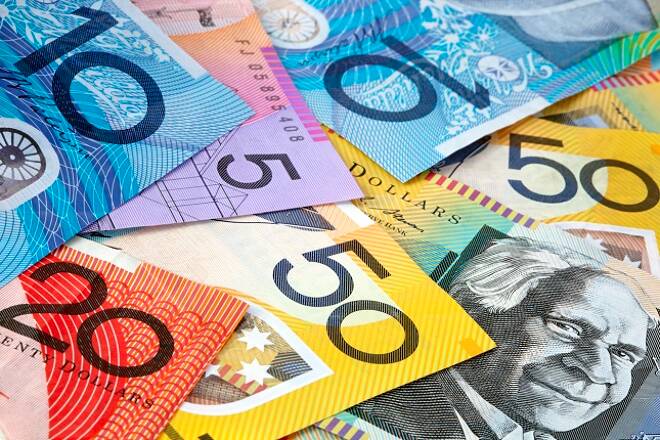Advertisement
Advertisement
Aussie Headline CPI Beats Forecast, but Core Inflation Misses Targets
By:
Traders liked the headline number, sending the Australian Dollar higher and just below its early January top at .7236 and its mid-December top at .7247. This price action is likely related to optimism over the outcome of the US-China trade talks and expectations of a dovish message from the U.S. Federal Reserve.
Australian consumer inflation beat forecasts last quarter, but core inflation ended 2018 below the central bank’s target band. This reaffirmed the view that interest rates will remain at record lows over the long-run.
Traders liked the headline number, sending the Australian Dollar higher and just below its early January top at .7236 and its mid-December top at .7247. This price action is likely related to optimism over the outcome of the US-China trade talks and expectations of a dovish message from the U.S. Federal Reserve.
The headline consumer price index (CPI) rose 0.5 percent in the December quarter, surpassing forecasts for a 0.4 percent increase.
“Annual CPI inflation ran at 1.8 percent, again beating estimates. Key measures of underlying inflation favored by the Reserve Bank of Australia (RBA) averaged around 1.75 percent for the year, in-line with forecast,” according to Reuters.
Reuters also reported that “core inflation has now undershot the RBA’s long-term target band of 2 percent to 3 percent for 12 straight quarters, the longest stretch since the series began.”
Japan December Retail Sales Up but Risks Remain
Japan’s retail sales rose more than forecast in December, which may ease some concern about the outlook for private consumption at a time of growing pressure on the economy.
Data from the Ministry of Economy, Trade and Industry showed Wednesday that retail sales in December rose 1.3 percent from a year earlier. This was more than the median estimate for a 0.8 percent annual increase and followed a 1.4 percent gain in November.
The government said that December’s increase was driven by annual spending increases of 4.1 percent on clothes and 4.4 percent on appliances.
Even with the boost in consumer spending, which some say was fueled by consumers front-loading purchases ahead of the implementation of a new sales tax, the chances that Japan will slide into a recession this coming fiscal year have grown over the past three months, according to a Reuters poll of economists. They base this assessment on the global economic slowdown and US-China trade friction.
U.S. Economic Data
While most eyes will be on the Fed decisions and the start of U.S.-China trade talks, early potentially market moving events could be the ADP Non-Farm Employment Change and Pending Home Sales Reports.
The ADP report, also known as Advance NFP, is expected to show the U.S. private sector added 180K jobs in January. This is down from 271K in December.
Pending Home Sales are expected to rebound to +0.8%, up from -0.7% in December.
About the Author
James Hyerczykauthor
James Hyerczyk is a U.S. based seasoned technical analyst and educator with over 40 years of experience in market analysis and trading, specializing in chart patterns and price movement. He is the author of two books on technical analysis and has a background in both futures and stock markets.
Advertisement
